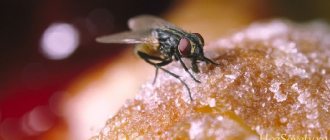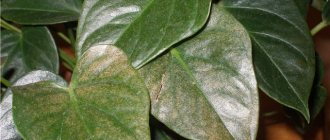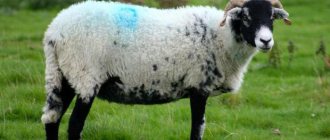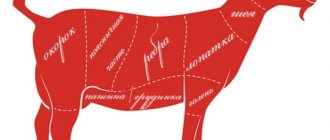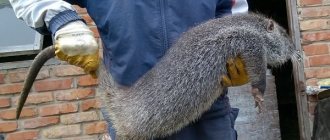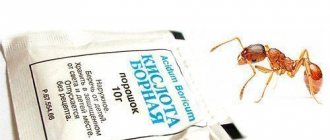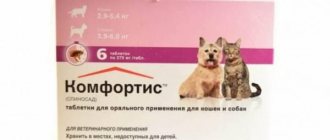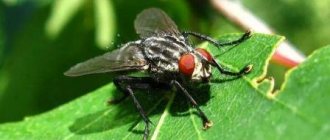There are indoor plants in almost every home. They give people positive emotions and purify the air. To continue to benefit from green crops, they need to be properly cared for. Its important component is pest control. If you find flower flies or larvae in indoor plants, you need to immediately begin solving this problem.
Protecting indoor plants from flower flies
What do insects look like?
Flower flies, or sciarids as they are also called, have an elongated body from 1.5 to 4 mm. Color dark gray. Juveniles have a light gray body. There are 2 pairs of wings on the back. The first are well developed, the second are reduced. The insect feeds using sucking mouthparts.
The female is capable of laying up to 300 eggs. The fly lays the eggs next to the roots. If you look closely, you will notice that the eggs are translucent.
After 6-7 days, the larvae are born. Body length from 2 to 10 mm. Large larvae leave a slimy trail on the soil. The roots of the plant act as food. After 2 weeks the larva turns into a pupa. The insect stays in this state for about 5 days.
Important: sciarids prefer to settle on violets, koleria and achimenes.
Taxonomy
Flower flies are generally divided into three subfamilies. Syrphinae, Eristalinae and Microdontinae and about 190 genera. Sometimes, however, Microdontinae is considered a separate family, and sometimes the tribubus is broken. Pipizini into a separate subfamily. The division into tribe and genus is constantly revised in accordance with new discoveries by researchers, not least with the help of DNA analyses.
Together with the eye-fly family (Pipunculidae), flower flies form the superfamily Syrphoidea.
Family in the Nordic countries
Below are all 78 genera found in Norden. Table columns can be sorted.
Subfamily Syrphinae
| Swedish name | Scientific name | Tribus | Author | Number of species in the Nordic countries |
| Needle flower flies | Vaccha | Bacchini | Fabricius, 1805 | 1 |
| Grass flower flies | Melanostomy | Melanostomini | Shiner, 1860 | 3 |
| Fly leg flower | Platycheirus | Melanostomini | Lepeletier and Serville, 1828 | 44 |
| Malblom flies | Xanthandrus | Melanostomini | Verrall, 1901 | 1 |
| Steppe flower flies | Paragus | Paragini | Latreille, 1804 | 8 |
| Wasp flower flying | Chrysotox | Chrysotoxin | Meighen, 1803 | 10 |
| Forest flower flies | Dasisirf | Sirfini | Enderlein, 1938 | 10 |
| Corner flower flies | Didea | Sirfini | Makkar, 1834 | 3 |
| Petals | Doros | Sirfini | Meighen, 1803 | 1 |
| Sunflower flies | Epistrophe | Sirfini | Walker, 1852 | 11 |
| May flowers | Epistrophella | Sirfini | Dushek and Laska, 1967 | 1 |
| Moving flower flies | Episirphus | Sirfini | Matsumura and Adachi, 1917 | 1 |
| Conifer flies | Eriozone | Sirfini | Shiner, 1860 | 1 |
| Wildflower flies | Eupeodes | Sirfini | Osten-Sacken, 1877 | 16 |
| Flies with wedge-shaped flowers | Fagizirf | Sirfini | Dushek and Laska, 1967 | 1 |
| Scented flower flies | Leucozona | Sirfini | Shiner, 1860 | 4 |
| Conifer flies | Megazirf | Sirfini | Dushek and Laska, 1967 | 1 |
| Flower girl flies | Melangina | Sirfini | Verrall, 1901 | 9 |
| Flower girl flies | Meligram | Sirfini | Frey, 1946. | 2 |
| Flower girl flies | Meliskaeva | Sirfini | Frey, 1946. | 2 |
| Bush flying flower | Parasirph | Sirfini | Matsumura, 1917. | 10 |
| Glass wing flower flies | Skaeva | Sirfini | Fabricius, 1805 | 3 |
| Dragonflies | Sphaerophoria | Sirfini | Lepeletier and Serville, 1828 | 17 |
| Sunflower flies | Sirf | Sirfini | Fabricius, 1775 | 6 |
| Flies with wedge-shaped flowers | Xantogram | Sirfini | Shiner, 1860 | 3 |
Subfamily Eristalinae
| Swedish name | Scientific name | Tribus | Author | Number of species in the Nordic countries |
| ? | Arbustorum | |||
| Bronze flower flies | Callicera | Callicherini | Tank, 1809 | 2 |
| Griffelblomflugor | Ceriana | Cerioidini | Rafinesque, 1815 | 1 |
| sawdust flies | Sphyxiemorph | Cerioidini | Rondani, 1850 | 1 |
| Flower grass flies | Cheilosia | Ringiini | Meighen, 1822 | 54 |
| Golden flower flies | Ferdinand | Ringiini | Rondani, 1844 | 2 |
| Flower grass flies | Portevinia | Ringiini | Goffe, 1944. | 1 |
| Beak flower flies | Ringia | Ringiini | Scopoli, 1763 | 2 |
| Ear flower flies | Pelecocera | Ringiini | Meighen, 1822 | 4 |
| sawdust flies | Braciopa | Chrysogastrini | Meighen, 1822 | 10 |
| Meadow flower flies | Chrysogaster | Chrysogastrini | Meighen, 1803 | 3 |
| Mountain flower flies | Chrysosyrphus | Chrysogastrini | Sedman, 1965. | 2 |
| Bark flower flies | Hammerschmidtia | Chrysogastrini | Schummel, 1834 | 1 |
| Metal flower flies | Lejogaster | Chrysogastrini | Rondani, 1857 | 2 |
| Meadow flower flies | Melanogaster | Chrysogastrini | Rondani, 1857 | 4 |
| Park flower flies | Myolepta | Chrysogastrini | Newman, 1838 | 1 |
| Dwarf flower flying | Neoascia | Chrysogastrini | Williston, 1886. | 8 |
| Glossy flower flies | Ortoneur | Chrysogastrini | Makkar, 1829 | 8 |
| The flower on the waist flies | Sphegina | Chrysogastrini | Meighen, 1822 | 6 |
| Dusty flower flies | Anasimia | Eristalini | Shiner, 1864 | 5 |
| Il flies | Eristalin | Eristalini | Rondani, 1845 | 2 |
| Il flies | Eristalis | Eristalini | Latreille, 1804 | 18 |
| Swamp flower flies | Helophilus | Eristalini | Meighen, 1822 | 7 |
| Sävblom flies | Lejops | Eristalini | Rondani, 1857 | 1 |
| Hole flower flies | Mallota | Eristalini | Meighen, 1822 | 2 |
| The skull is flying | Myathropa | Eristalini | Rondani, 1845 | 1 |
| Beach flower flying | Parhelophilus | Eristalini | Hirschner, 1897 | 3 |
| Bear flower flies | Arctophila | Eristalini | Shiner, 1860 | 2 |
| Peat flower flies | Sericomia | Eristalini | Meighen, 1803 | 5 |
| Moon flowers | Eumerus | Eumerini | Meighen, 1822 | 8 |
| Soot flower flies | Psilota | Eumerini | Meighen, 1822 | 2 |
| Narcissus flower flies | Merodon | Eumerini | Meighen, 1803 | 2 |
| The gall flower flies | Goeringia | Pipizini | Rondani, 1856 | 8 |
| The gall flower flies | Pipisa | Pipizini | Fallen, 1810 | 8 |
| Floral flowers Rotlus | Pipizella | Pipizini | Rondani, 1856 | 3 |
| The gall flower flies | Trichopsomia | Pipizini | Williston, 1888. | 2 |
| The gall flower flies | Triglyph | Pipizini | Loew, 1840 | 1 |
| Bumblebee flies | Volucella | Volucellini | Geoffroy, 1762 | 3 |
| Stump flower flies | Blair | Xylotini | Billberg, 1820 | 2 |
| Mulberry flies | Brachypalpoides | Xylotini | Gippa, 1978 | 1 |
| Mulberry flies | Brachypalp | Xylotini | Makkar, 1834 | 1 |
| Magnificent flower flies | Caliprobola | Xylotini | Rondani, 1845 | 1 |
| Mulberry flies | Chalkosirf | Xylotini | Curran, 1925 | 5 |
| Fur flower flies | Criorhina | Xylotini | Meighen, 1822 | 4 |
| Firewood is flying | Lejota | Xylotini | Rondani, 1857 | 1 |
| Fur flower flies | Pokota | Xylotini | Lepeletier and Serville, 1828 | 1 |
| Bloody flower flies | Houndmaster | Xylotini | Latreille, 1804 | 1 |
| Taigablomflugor | Sphecomia | Xylotini | Latreille, 1829 | 1 |
| Tree flower flies | Spilomia | Xylotini | Meighen, 1803 | 2 |
| Compost flower flies | Syritta | Xylotini | Lepeletier and Serville, 1828 | 1 |
| Tiger flower flies | Temnostoma | Xylotini | Lepeletier and Serville, 1828 | 7 |
| fireflies | Tropidia | Xylotini | Meighen, 1822 | 2 |
| Firewood is flying | Xylota | Xylotini | Meighen, 1822 | 12 |
Subfamily Microdontinae
- Marsh flies ( Microdon
), (Meigen, 1803), 5 species
Causes of the pest
Before you start fighting flies, you need to understand why they appear. There are 3 main reasons:
- Untreated soil. Most often this is soil collected from the garden. There are already eggs in the soil that hatch under favorable conditions.
- Waterlogging of the soil. Some housewives overwater their plants, especially in the summer. This causes water to stagnate in the pots. A favorable environment attracts the pest.
- Open window. This reason is especially relevant if there is a lawn growing under the windows.
If the fly entered the apartment, then after 3 weeks there will be about 300 individuals on the flowers.
Types of flower midges
Before you start fighting midges in flowers, you need to know what pests there are. Let's take a quick look at the types of midges.
Fools
– the most frequent guests of indoor plants. Small, white midges no larger than 1 mm in size. They can be seen on the surface of freshly watered soil or at the foot of a flower pot.
Poduras appear mainly in the cool season, actively flying from leaf to leaf. The larvae of these pests, while in the ground, have a negative effect on the root system of the plant.
Sciarides
- small, black insects similar to mosquitoes. They fly abundantly throughout the living space.
The larvae of this pest are translucent worms up to 0.5 cm long. They make the soil dense, inaccessible to life-giving oxygen, and also attack the root of the plant itself.
Sciarides can appear as a result of the use of homemade organic fertilizers to feed plants (tea leaves, humus, sphagnum moss, rotting leaves).
Drosophila
– red, small midges, very similar to flies, can cause irreparable harm to our pet.
Ways to fight
If you do not fight the pest, all the plants in your home will suffer. There are 2 ways to eliminate insects:
- chemical;
- folk
Each of the options will allow you to quickly deal with the problem that has arisen.
Chemicals
In household chemical stores, you can find products against flower flies. Drugs are divided into groups:
- Granules or powders. Effective means include “Thunder 2” and “Fly Eater”. Substances are applied to the soil surface and then watered. The treatment must be repeated after 3 days.
- Insecticidal preparations. Experts recommend using Actellik, Fitoverm and IntaVir. Before treating plants, you need to prepare a solution. The proportions are indicated in the instructions for each drug. The substance affects adults and larvae.
- Aerosols. “Dichlorvos”, “Raptor” and “Raid” cope with their task perfectly. The aerosol is sprayed onto the plant leaves and soil.
- Crayons. The most popular is “Mashenka”. The product is effective only against larvae. The chalk is ground to a powdery consistency and then poured onto the soil.
Important: regardless of the product chosen, you must strictly follow the instructions, otherwise you can harm the plants.
Folk remedies
Housewives who are afraid of harming flowers are advised to use traditional methods. The most effective control options include:
- Potassium permanganate solution. To disinfect the soil, it is necessary to dilute the product in water. The solution should have a light pink tint. Water the soil generously with the prepared product. The procedure is repeated after a few days, when the top layer of soil has dried. The method is effective against larvae and adults.
- Matches. If the pot is small, it is enough to use 20 matches. They are placed in the soil with their heads down. After this, the soil is watered. When the sulfur begins to dissolve, the pest will die.
- Green dill. If desired, you can use a dry plant, but the effect will be less. The dill is crushed and then poured onto the soil.
- Wood ash. The product allows you to get rid of the larvae. Ash is sprinkled in a thin layer on the ground. This product will not only get rid of the pest, but will also become a good fertilizer for the plant.
Folk methods differ from chemical means in that they are not capable of causing harm to flowers.
Childbirth
In Europe there are 36 genera, of which the Nearctic has about 40 genera, about 640 species.[1] The following is a list of genera found in Europe:[2]
- Aklandia
- Acridomia
- Aciglossa
- Adia
- Alliopsis
- Anthomyia
- Boreophobia
- Botanophila
- Kallithea
- Chiastocheta
- Chirosia
- Delia
- Egle
- Emmesomia
- Enneastigma
- Eustalomia
- Eutrichota
- Fucellia
- Heterostylodes
- Hydrophoria
- Hylemya
- Hylemyza
- Hyporites
- Lasiomma
- Leucophora
- Mycophaga
- Myopina
- Paradelia
- Paregle
- Pegomya
- Pegoplata
- Forbia
- Strobilomia
- Subhylaemia
- Tettigoniomy
- Zaphni
Prevention
Although floaters are easy to deal with, it is best to prevent them from appearing. To do this, you need to choose the right soil. It is best if the soil is from a store, as it has already been treated against insects.
If one of the plants is damaged, it should be separated. Before this, the leaves are washed with warm water. Thanks to this procedure, eggs located on the leaves or near the stem will be washed away.
For feeding, only ready-made fertilizers are used. If you collect them yourself, the likelihood of introducing flower fly eggs increases.
Who eats flies
In nature, there are natural enemies among plants, animals, and birds.
- To get rid of parasites in the house and prevent them from multiplying, you need to acquire a beautiful flower - geranium. Its phytoncides kill insects.
- Tansy flowers and stems secrete substances that cause muscle paralysis in insects. In the room where there is an unusual bouquet, there will be fewer parasites. Crushed dry wormwood flowers are also used for control. They are ground into powder, applied to double-sided tape, and hung in the house from the ceiling. Pyrethrum, which is obtained from a certain type of chamomile, has the same effect.
- To get rid of stink bugs and prevent them from entering the house, cloves, peppermint, begonia, bird cherry, anise, valerian, and eucalyptus are planted on the site.
Flies are eaten by cats, ground beetles, praying mantises, spiders, frogs, toads, birds, and dogs for entertainment purposes.
Classification
Annoying insects can live both in nature, obtaining their own food, or settle closer to human habitation and use those products that people forget to remove or throw away. Let's consider what flies eat, and what groups are divided into in science depending on the organization of nutrition. The information is presented in the table.
Adults are bloodsuckers and also consume ichor and sweat. Larvae feed on excrement
Food consists of food waste and excrement of people and animals. In nature they can consume plant juices
Omnivores: feed on waste, food products, and excrement
Most often in houses and apartments you can find house flies and house flies, but autumn flies and some other species often fly in as well.
Methods with chemicals
Sometimes white aphids appear on flowers.
These are future small flies, another type of pest. We don't think it makes a difference what color of the species attacked your flowers, but what matters is how you get rid of them. If aphids appear on the plant or a swirling cloud of flies near the root, try using a cockroach pencil (crayon, chalk). Simply drawing a line inside the pot will usually help kill the midges.
Pesticides against flower midges are sold in departments for gardeners and gardeners. Before using them, evaluate the subsequent risks: do you want to water the flowers with chemicals, will this harm the plant. Known among flower growers, “Aktara” copes well with small midges when watering. There are other similar chemicals, if you purchased them, follow the instructions strictly.
Important! When treating plants with chemicals, watering should be limited.
Flower midges are annoying and quite hardy creatures. If the methods you have taken have not destroyed them, we suggest the most effective and efficient one.

